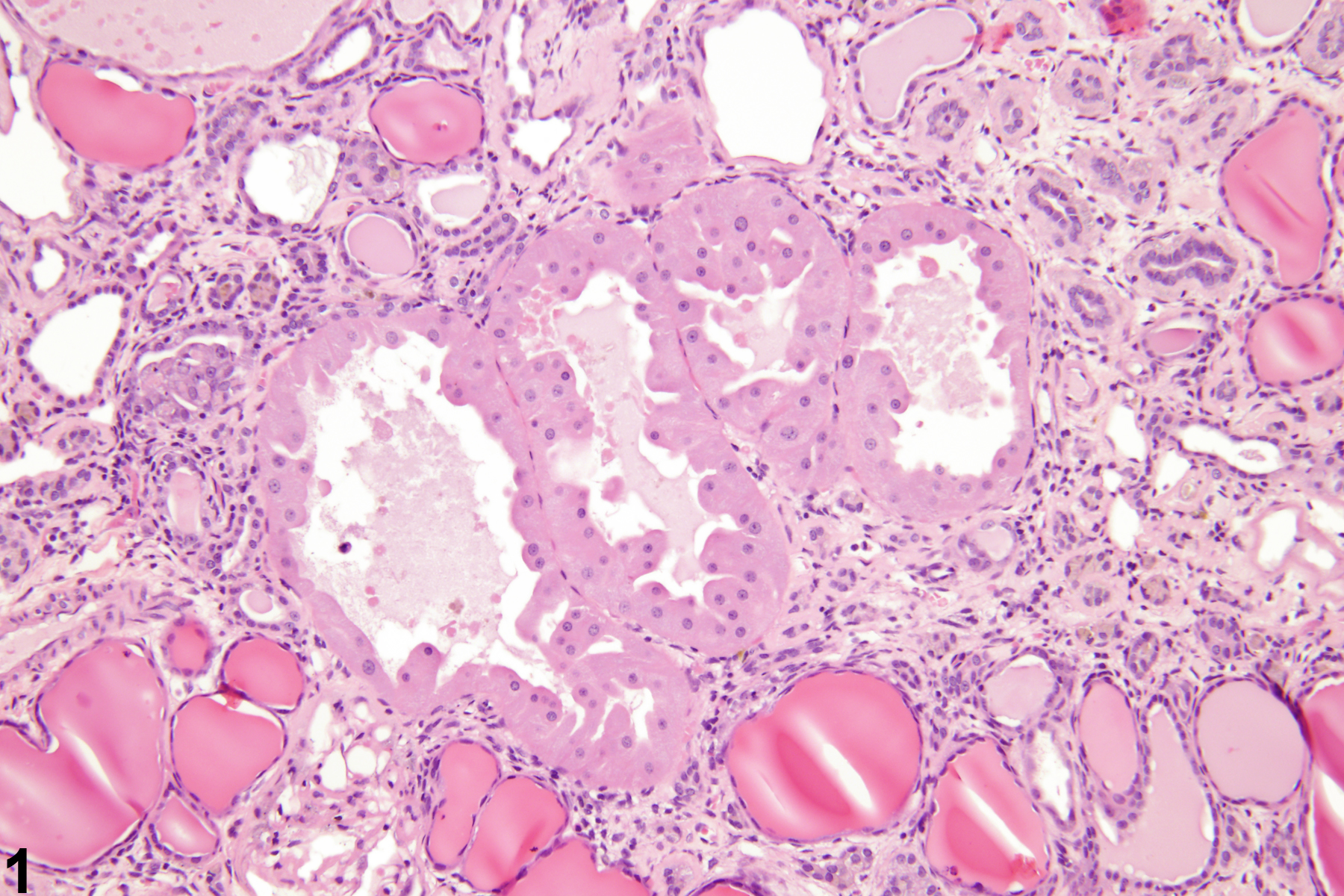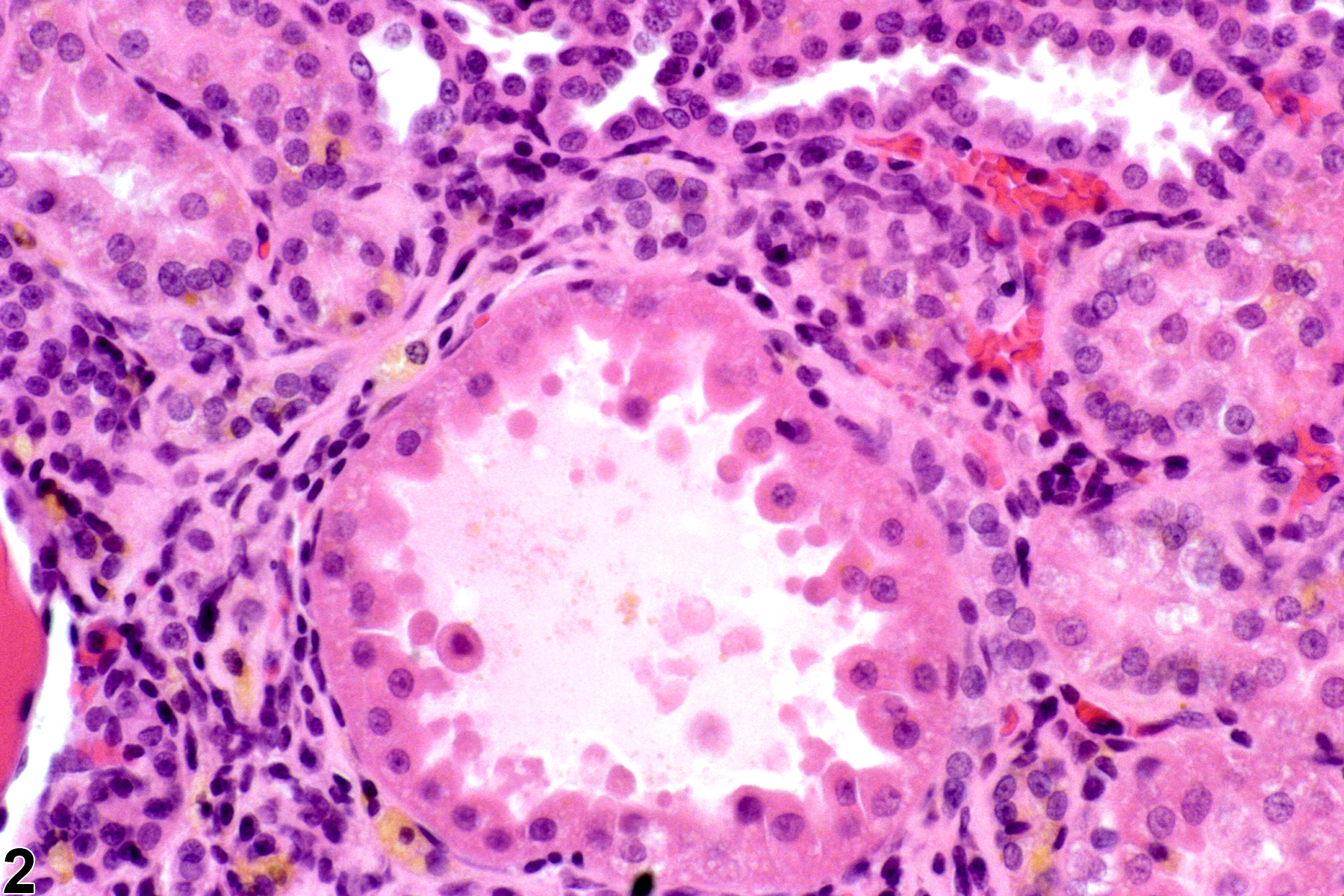Urinary System
Kidney, Renal Tubule - Hypertrophy
Narrative
Ellison DH, Velazquez H, Wright FS. 1989. Adaptation of the distal tubule of the rat. Structural and functional effects of dietary salt intake and chronic diuretic infusion. J Clin Invest 83:113-126.
Full Text: http://www.ncbi.nlm.nih.gov/pmc/articles/PMC303651/Frazier KS, Seely JC, Hard GC, Betton G, Burnett R, Nakatsuji S, Nishikawa A, Durchfeld-Meyer B, Bube A. 2012. Proliferative and non-proliferative lesions in the rat and mouse urinary system. Toxicol Pathol 40:14S-86S.
Abstract: http://www.ncbi.nlm.nih.gov/pubmed/22637735
Kidney, Renal tubule - Hypertrophy in a male F344/N rat from a chronic study. These hypertrophied tubular epithelial cells with an increased amount of amorphous, eosinophilic cytoplasm and small, round, dense nuclei are associated with chronic progressive nephropathy.



